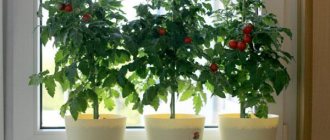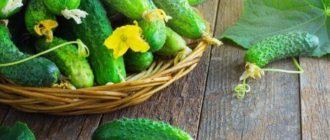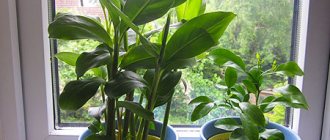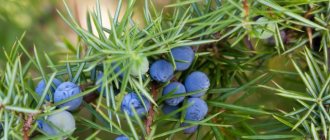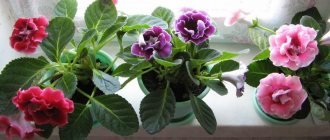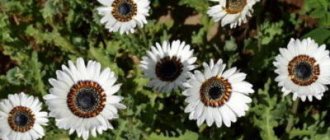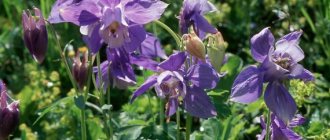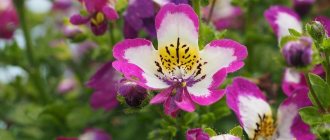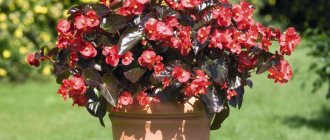Hello, dear readers!
So, dear friends, after reading the previous articles, you are probably thinking about planting lemon, dill, parsley or cilantro at home. Or maybe some of you have already planted these plants? Then let's talk about the next resident of our windowsill - sweet peppers.
Sweet pepper is very beautiful with its tight fruits, bright, tasty, filled with vitamins. This is exactly what we miss so much on rainy autumn days, and on harsh winter days, and during the period of spring vitamin deficiency.
Do you want to admire peppers and eat them all year round? In this case, feel free to start planting peppers on your windowsill , as these plants are ideal for caring for and growing in an apartment.
Diseases and problems
Ornamental pepper is an unpretentious plant, and if you follow all the care tips, it will grow without any problems. The main symptoms of improper crop care include:
- Wrinkling of the fruit skin and falling flowers. This is due to insufficient watering of the bush.
- Falling leaves in winter. This problem occurs in a plant when it does not have enough lighting.
- Foliage wilting and soft to the touch. The symptom is associated with dry air in the room.
- Slow growth. Occurs when plants lack nutrients.
- Root system rot. It is provoked by overflow of liquid and high temperature in the apartment.
- Poor harvest and lack of flowering. This is due to the use of large amounts of fertilizers containing nitrogen.
Pests and diseases are rarely found on the vegetable. The greatest danger comes from spider mites and aphids, which appear if the room is dry and poorly ventilated. To get rid of aphids, you need to treat the plant with an insecticide. To combat mites, the capsicum and pot are treated with acaricide.
To grow decorative indoor peppers, you do not need special tools and conditions, you just need to properly care for the crop. By giving it a little care and attention, you can get not only a beautiful, but also a tasty, healthy plant.
Pepper on the windowsill of the best variety
Compact, low-growing varieties of peppers are ideal for planting at home (they are the most unpretentious and persistent). The growth of this plant will reach half a meter and it will fit perfectly into the size of your window. The best varieties:
- Treasure Island. After 90-100 days, the pepper will invite you to taste its juicy orange-red heart-shaped fruits. Their weight reaches up to 60 grams, the thickness of the peel is up to 7 mm.
- The firstborn of Siberia. The harvest ripens in 108-113 days from the moment of germination. The fruits are large, up to 100 g (skin thickness up to 6 mm). Bright red in color, these peppers are aromatic and delicious.
- Dwarf. A variety of pepper with juicy, red, fleshy, cone-shaped fruits. Their weight reaches up to 83 grams (walls up to 9 mm). The harvest can be harvested after 110 days from the time the sprouts appear.
- Watercolor. Glossy, cone-shaped scarlet peppers will be ready for your table in 110 days. This pepper on the windowsill has small fruits, “one bite”, their weight reaches up to 30 grams, with a thin peel up to 2.5 mm.
- Gift from Moldova. Large dark red peppers will delight you with a rich, sweet taste after 124-136 days. The weight of the fruit reaches 90 grams, the thickness of the peel is up to 6 mm.
- Martin. A fragrant variety, the red juicy fruits of which can be used to decorate the table after 130 days. The fruits are large, up to 84 grams, with thick (up to 5 mm in size) walls.
These pepper varieties are highly productive and will delight you with their attractive fruits all year round.
Description of culture
Hot peppers are a perennial plant of the nightshade family.
With proper care, it can bear fruit for five, and in some cases up to ten years. For indoor cultivation, varieties are intended with a bush of moderate size - about 30 cm - and small but numerous fruits of a conical, round or elongated shape. This is a light-loving and heat-loving plant, sensitive to microclimate. The crown color of decorative hot peppers can be green or purple, and the fruits change as they ripen - from white or green to dark red. Unripe peppercorns can be yellow, orange, or purple. Non-simultaneous ripening makes the plant even more elegant and colorful. The taste of ripe hot peppers grown in a pot is extremely hot.
Seed preparation
To save future plants from infections, the seeds should be kept for 20 minutes in a 2% solution of potassium permanganate, then rinsed with cool water. And soak in nutrient solutions of epin or zircon (growth biostimulants):
- Epin. Take 2 drops of it per 100 ml of water.
- Zircon. Add 1 drop to 300 ml of water.
The seeds should be kept in the healing solution for about a day at room temperature. Then place them in damp gauze and place them in a dark, warm place.
Keep the pepper seeds there for 3 days at a temperature of +20° C to +25° C. Periodically moisten the cloth with warm water (do not allow it to dry out).
As soon as the seeds hatch, you can transfer the pepper to the windowsill .
Care and creation of favorable conditions
To successfully grow ornamental peppers, you will have to create suitable conditions for them .
Watering and fertilizing plants
The plant should be watered regularly, but only after the top layer has dried.
Attention! There is no need to overwater the pepper: this will have a bad effect on the root system and the general condition of the plant.
Fertilizers are applied regularly along with watering, approximately once every 14 days . You can take ready-made mineral complexes for house plants.
Choosing a location, lighting and temperature conditions
Choosing a location is a hot topic for lovers of ornamental plants. Capsicum requires bright but diffused light , since direct sunlight causes burns on delicate leaves.
The best places for pepper pots will be windows oriented east or west . On southern window sills you will have to create artificial shading.
View this post on Instagram
Posted by Anstasiia Kovalenko (@ladyintheredd)
Peppers are heat-loving; the optimal temperature for keeping them is normal room temperature from +21 to +24 °C . However, it is important to exclude drafts.
Harvesting
The timing of fruit harvest depends on the goals set during cultivation. So, slightly unripe fruits are collected for sale : by the time they are displayed on the counter, they reach the required maturity.
Ripe berries are suitable for drying. For cooking, both ripe and unripe berries are removed .
Caring for perennial peppers in winter
With good lighting (additional lighting with a phytolamp), rich soil, optimal temperature and regular feeding, peppers do not enter a dormant period.
But if it is not possible to create suitable conditions, it is better to trim the branches, move the pot with the plant to a cool (about +15 ° C) dark place , reduce watering to a minimum and stop feeding. Then the pepper will rest, and in the spring, having gained strength, it will bloom again.
Let's start landing
We need to prepare several containers in advance for growing peppers . Each pepper needs its own home, a separate wide and deep enough pot (so that the rhizome of the plant is spacious and comfortable).
Don't forget about a drainage layer (fine gravel, expanded clay or broken small pieces of red brick will do).
You can plant seeds at one of the most convenient periods for you:
- The last days of February - the beginning of March. It is necessary to choose the most suitable time for planting (focus on the weather forecast). If, a week after planting the seeds, nature decides to pamper us with very warm, sunny weather, the pepper may slow down its growth. In this case, at home, at the beginning of its growth, it is better to keep the pepper on the north window for some time.
- Winter months. When planting seeds in winter, it is necessary to ensure that there is 12 hours of daylight every day. Additionally, illuminate the pepper with fluorescent lamps.
- The plant germinates well when the seeds are planted in late July or early September. Again, keep an eye on the weather forecast (for any upcoming days that are too warm).
Preparing the soil
For peppers, it is better to purchase ready-made soil (“Terra-Vita” or “Ogorodnik”). This soil is already enriched with essential microelements and does not contain harmful microorganisms.
If you decide to use ordinary garden soil, first calcine it with a saturated solution of potassium permanganate, then water it with water. Or prepare enriched soil:
- Sod land 2 parts
- Humus 1 part
- Clean, sifted sand 1 part
It is better to take turf soil from the place where meadow clover grows. Ash must be added to any soil (2 cups of ash for every 10 kg of soil). Pepper is extremely sensitive to the salt content in the soil and the level of acidity. Add dolomite flour or lime to the soil (take 16 grams of the substance per 1 kg of soil).
Special hydrogels can be used. It is designed for home gardening. When hydrogels are mixed with soil, they swell, absorb excess water and at the same time make the soil looser, retaining nutrients.
Planting seeds
To wait for the first shoots of pepper on the windowsill, you need to be patient. Peppers germinate after 1-2 weeks.
If the plant stubbornly refuses to germinate, increase the length of daylight hours (extend additional lighting from 7 a.m. to 9 p.m.).
- Plant two seeds in small peat pots (pre-filled with loose, fertile soil). Water and cover the top of the pots with cling film. Place them in a warm place at a temperature of + 25° C. The pots can be buried under adult, fruiting peppers in a lighted place (if you have already grown peppers before).
- After the first, tender sprouts appear, pierce the film with a knitting needle in several different places. When the peppers confidently begin to grow and acquire the first two or three leaves, the film can be removed. And start transplanting (picking) one young sprout into a large pot. We remove the weaker plant.
Picking. Transplanting seedlings into a more spacious home (with root shortening). The shortened root begins to branch and develop more vigorously.
After picking, the rhizome becomes stronger, wraps around and holds the earthen ball better, and the homemade pepper itself on the windowsill brings more harvest. Dive process:
- Fill the soil in the pot where you will replant the pepper with plenty of water a day before;
- before picking, make a depression in the new soil in the center of the pot;
- moisten the soil around the sprout generously an hour or two before surgery;
- carefully take it and lift it along with the earthen lump, shake it off the ground;
- very carefully shorten the spine by about 1/3 (you can pinch it with your nails);
- delicately place it in the prepared hole in a new pot so that the central root does not bend and the leaves are 2 cm above the soil level;
- Compact the soil around the seedling with your fingers;
- Pour warm water over the transplanted pepper.
In order for the pepper to grow large and fertile, it needs to be replanted and grown in small, capacious buckets or large ceramic bowls.
Before picking, gradually accustom the young sprout to harsher conditions (gradually take it out into the fresh air, increasing the walking time).
But make sure that the small pepper does not fall under drafts or exposure to low temperatures that are detrimental to it (below +13° C).
How to grow indoor peppers in a pot?
For cultivation, a sequence of rules is followed:
- Seeds are selected, they and containers for planting are disinfected.
- Buy soil or make it yourself.
- To obtain a good result, maintain temperature and humidity conditions.
Seed preparation
Seeds can be purchased at the store or collected independently from ripe peppers. Before sowing, seeds are calibrated :
- Dip into a solution of water and table salt, mix and leave for a while.
- Weak seeds will remain on the surface. They need to be removed.
- Large seeds are treated with potassium permanganate and then with microelements, dipping bags of seeds into the solution. Without washing, the seeds are dried.
Reference ! Wood ash is also used for nutrition; it contains about 30 different elements. Ash is added to the water and the seeds are kept in solution for 3 hours.
Priming
Pepper loves soil that is neutral in composition .
The substrate can be purchased at the store or mixed at home. To prepare the soil you will need turf soil, leaf humus and sand in equal quantities. The soil should be permeable to air and have a loose consistency. For nutritional value, add a little humus or sawdust.
Gardeners advise adding agroperlite or vermiculite, which prevent soil compaction and retain moisture.
Planting container
For primary sowing, choose containers of 200-300 ml. Soil that has not been developed by roots will quickly oxidize if planted immediately in a large pot. In addition, overgrown roots will lead to a reduction in flowering. There must be a hole at the bottom to collect excess water , and a tray is placed under the pot. The growing container should have a capacity of approximately 2-3 liters.
When and how to plant?
The time for sowing seeds depends on the variety:
- Spring ripening seeds begin to be planted in November and late December.
- Summer plants - from April to May.
- Those that ripen in the fall - from mid-summer to the end of August.
- Pots for sowing are prepared with a capacity of approximately 0.2 liters. Drainage is laid out at the bottom of the container - 2-3 cm of sand or expanded clay.
- The earth is falling asleep. It is better to purchase the substrate in a store, this will give you more confidence that it is not contaminated with anything.
- First, the seeds are soaked for several hours. To do this, use a solution of potassium humate.
- After soaking, the seeds are placed in the ground, sprinkled with soil and compacted.
- Containers or containers are covered with transparent film to create a greenhouse effect. The temperature must be maintained within 23-25oC.
- After 1-2 weeks, the first shoots form and the shelter is removed.
- The temperature must be lowered to 16-18°C after 5 days.
- Periodically moisten the soil with settled water.
- After the appearance of 5-6 strong leaves, the plant is transplanted into a separate container.
Mass planting for ornamental peppers is not used; each pepper must have a separate pot.
Caring for our peppers
| Operation | Pepper's wishes | Adviсe |
| Watering | As needed | Pepper on the windowsill should be watered with settled warm water (water temperature +30° C). Spray the pepper with additional warm water every day. To prevent the plant from overheating during the winter heating season, cover the battery with a damp cloth. Do not forget to constantly loosen the soil. |
| Lighting | In winter, daylight hours should be 12 hours | Periodically turn the plant with different sides towards the window. Fluorescent lamps are suitable with a regular white spectrum. Avoid direct exposure to sunlight. |
| Temperature | Day +25° - +27° C Night +10 ° - +15° C | In summer it is good to keep the pepper on the balcony, in winter it is good to move it to windows facing south. Beware of drafts and sudden temperature fluctuations. |
| Top dressing | It is necessary to fertilize once every two weeks after watering. | You can feed peppers on the windowsill with purchased nitrogen fertilizers for indoor flowers. Or make a nutrient solution (3 liters of water and 6 tablespoons of ash). As a top dressing, you can prepare decoctions of nettle, plantain, and clover. This is very beneficial for peppers. |
The plant may suffer from a lack of minerals. How to grow peppers in the most favorable conditions? Just monitor the condition of its leaves and promptly apply the necessary fertilizer with the appropriate composition:
- leaves curl, a dry edge appears at the edges - lack of potassium (add potassium sulfate or potassium nitrate);
- matte color of the leaves with a grayish tint, the foliage begins to shrink – there is not enough nitrogen (ammonium nitrate, which contains 35% nitrogen, will help);
- the lower part of the leaves acquires a purple color, and the leaves themselves begin to press against the trunk and stretch upward - there is little phosphorus (you need 16-18% phosphoric acid);
- the leaf crown acquires a marbled color - the pepper on the windowsill lacks magnesium in the diet (magnesium is required in sulfate form).
Do not use potassium salt or potassium chloride (their composition with excess chlorine is harmful to pepper roots). But pepper is not afraid of excess nitrogen.
Choosing varieties
Low-growing compact varieties of peppers, up to 50 centimeters, are suitable for growing on a windowsill. Recommended varieties of sweet peppers: Watercolor (red cone-shaped variety), Dwarf, Karat, Kolobok (very early ripening round red fruits), Lilac Cone.
Many excellent varieties have also been bred for hot peppers that can grow very well at home: Confetti (on one plant the fruits range from yellow to purple), Falcon's Beak, Goldfinger (yellow, conical), Bishop's Crown (red fruits of a very unusual shape, real exotic) and many others.
Pepper bushes that will settle on your windowsill are also very decorative. Since the plant does not have a pronounced dormant period, on one bush you can find flowers, ovaries, and fruits - it looks very beautiful!
How to properly grow peppers at home, on an ordinary windowsill?
We are waiting for the harvest
Most domestic pepper varieties are self-pollinating plants. By the way, they can also cross-pollinate. Therefore, try to keep different varieties of peppers away from each other.
When the first fruits appear, do not overload the plant - leave up to 4-5 fruits on it.
Getting your own seeds
To do this, we select red, ripe fruits. We carefully trim the pepper around the stalk and very carefully remove the seed pod, holding it by the stalk.
We devote the next 4 days to drying the seed carrier at a temperature from +25° C to + 30° C. And separate the seeds. They must be stored in a paper bag in a warm, dark place.
The maximum shelf life of seeds is 5 years.
Replanting the plant
Peppers need to be replanted on the windowsill once a year. He wants new, fresh land for a richer harvest (after all, he has already taken everything useful from the old soil). Change the soil completely to fresh one.
Replant the plant carefully, trying not to injure the root system with a lump of earth.
And after two years of the pepper’s life, it needs to be changed. It is a biennial plant and will readily pass the baton to younger and stronger peppers.
Have a rich harvest!
See you soon, dear readers!
Botanical features
Decorative hot pepper has many varieties, most of which are successfully grown at home .
Plants are divided into annual and perennial. Attention! For decorative purposes, it is better to grow low perennial varieties, since the annual variety dies off after fruiting.
These plants are low shrubs or subshrubs with bright green dense smooth leaf plates, beautiful flowering and abundant fruiting.
Flowering occurs at the beginning of summer , the color of the petals can vary from white to light purple.
The small cone-shaped fruits have bright colors and glossy skin. The color of the fruit can be:
- green;
- yellow;
- red;
- dark burgundy;
- black.
Is it possible to eat indoor peppers?
Talking about the features of exotics, one cannot help but highlight the question of whether this little pet is edible or not? The fruits of ornamental peppers do not contain toxins that can harm humans .
However, their pungency is incredibly high due to the high content of a substance called capsaicin.
Interesting! In the homeland of peppers in South America and Asian countries, hot peppers are widely used in cooking, but for residents of our region who are unaccustomed to their pungency, peppers can cause serious burns to the mucous membranes.
Experiments should not be carried out unless absolutely necessary. You can use dried peppers as a seasoning for your favorite dishes: this way their spiciness will be somewhat less.
